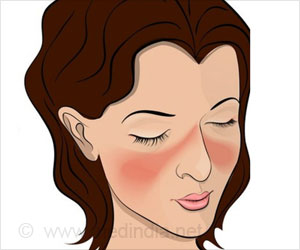A rich chocolate cake is tempting you and you need a dietitian's advice at once. But where is a dietitian when you need one? e-Care for Heart Wellness study finds an answer.

"One patient said, 'It's like having a dietitian in your pocket,'" said Beverly B. Green, MD, MPH, a family doctor at Group Health, an associate investigator at Group Health Research Institute, and an assistant clinical professor in family medicine at the University of Washington (UW) School of Medicine. "The patients really loved this intervention—and having access to a dietitian to work with them toward a healthier lifestyle."
In addition to team-based care led by a dietitian, the patients in the intervention group were given a home blood pressure monitor, a scale, and a pedometer. They each had one in-person visit with a dietitian where, together, they created a plan to reduce their heart risk, including the Dietary Approaches to Stop Hypertension (DASH) diet, with eight to 10 servings of vegetables and fruits per day. The DASH diet is not about eating less food, just more of the right food, Dr. Green said, quoting a patient who said: "All those fruits and vegetables kept me full and less likely to eat something I might regret later."
The visit to the dietitian was followed by planned follow-up by secure messaging (through Group Health's website for patients) to report their blood pressure, weight, and vegetable and fruit intake—and to receive ongoing feedback. When appropriate, the dietitians also encouraged patients and their doctors to consider changes to their hypertensive and lipid-lowering medication dosages.
Of the 90 people who completed six-month follow-up, the 44 who had been randomly assigned to receive dietitian e-care had higher rates of patient satisfaction and of use of Group Health's secure messaging than did the 46 assigned to education and usual care. Although blood pressure and heart risk trended lower in the intervention group, the differences weren't significant—unlike their weight.
"Heart disease and stroke are the number-one cause of death in the United States, but they don't have to be," Dr. Green said. "If people had better control of their heart risk factors such as blood pressure and cholesterol, and we could prevent or decrease obesity, we could cut the number of heart deaths in half." And that's just what she's been trying to do, by shifting health care from the doctor's office to where people live: in their homes—and online.
Advertisement
Next steps, since this study proved the intervention is feasible? Combining the e-Care and e-BP studies, which were both based on the Chronic Care Model. "We're planning a larger randomized controlled trial, where we will tailor the e-care for the patients who have hypertension," Dr. Green said. "We'll pair each patient with either a pharmacist or a dietitian, depending on their individual needs."
Advertisement
Source-Eurekalert









